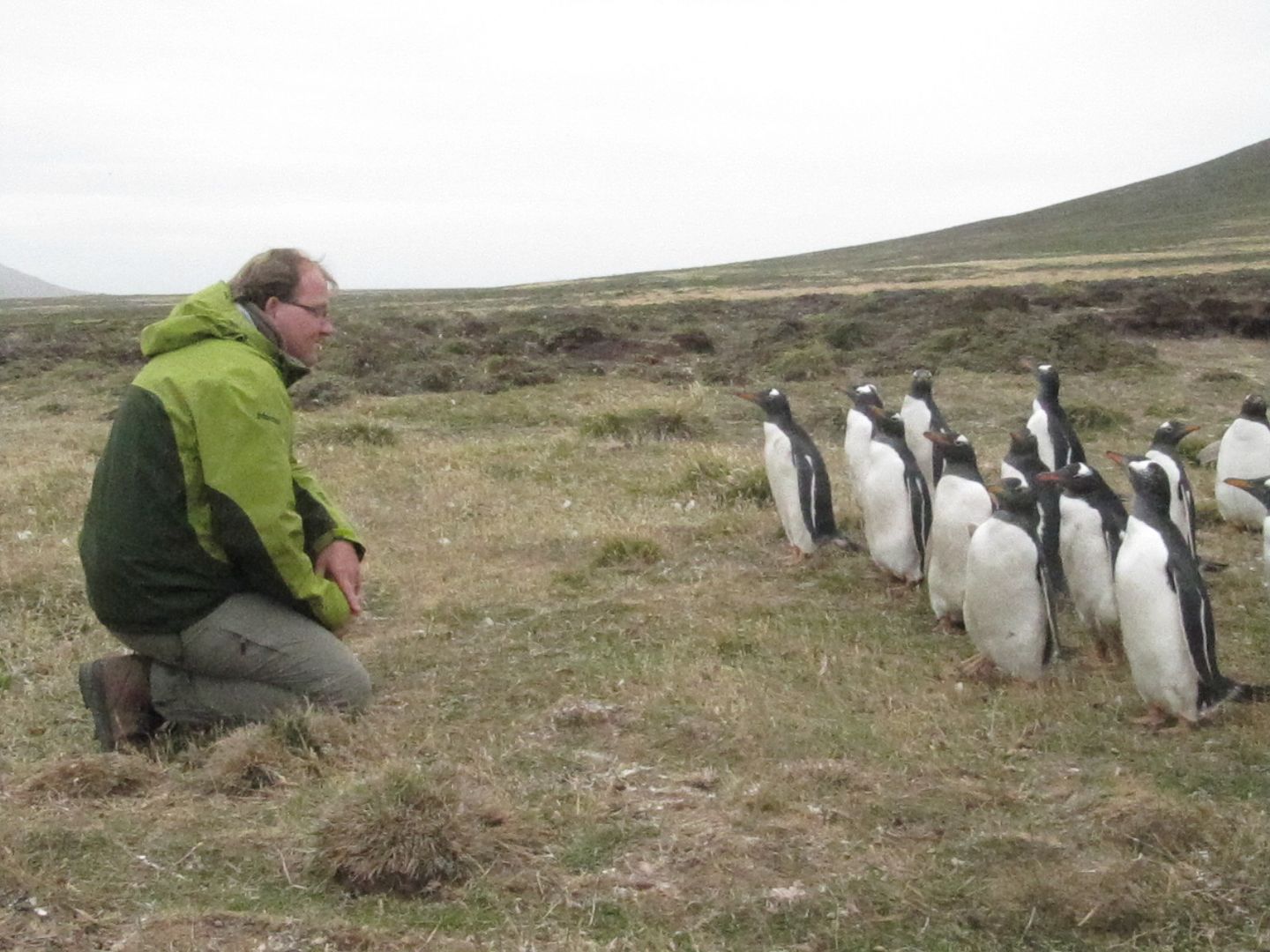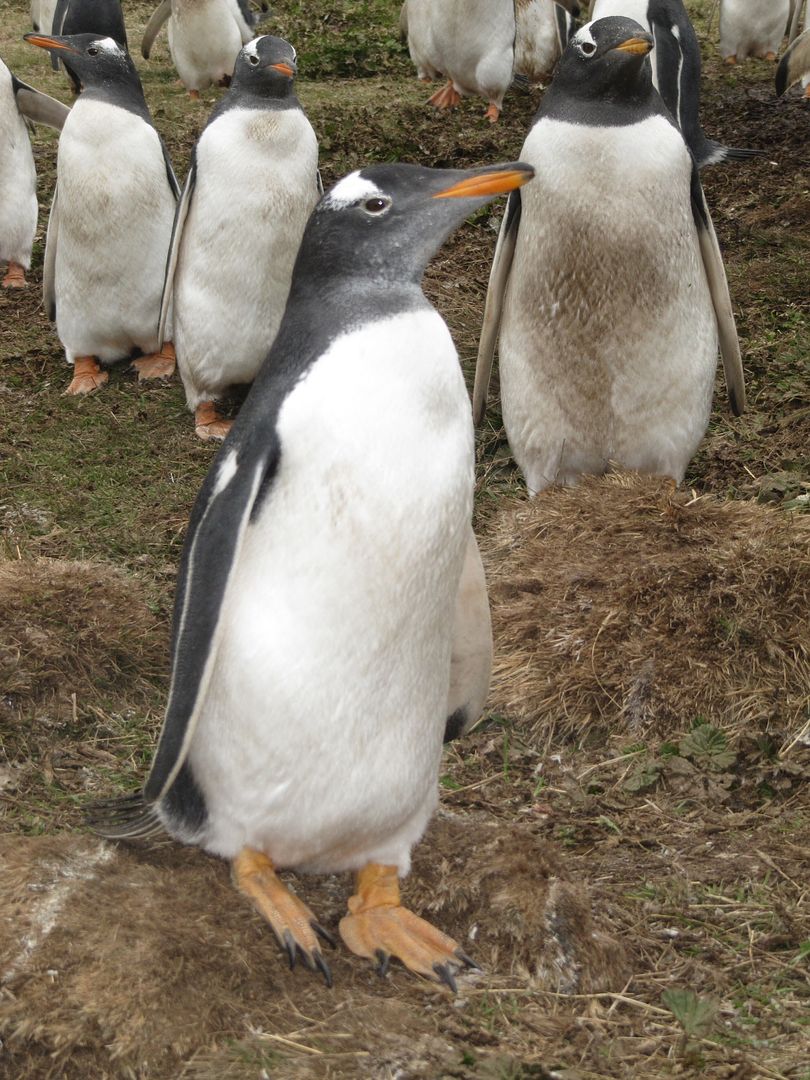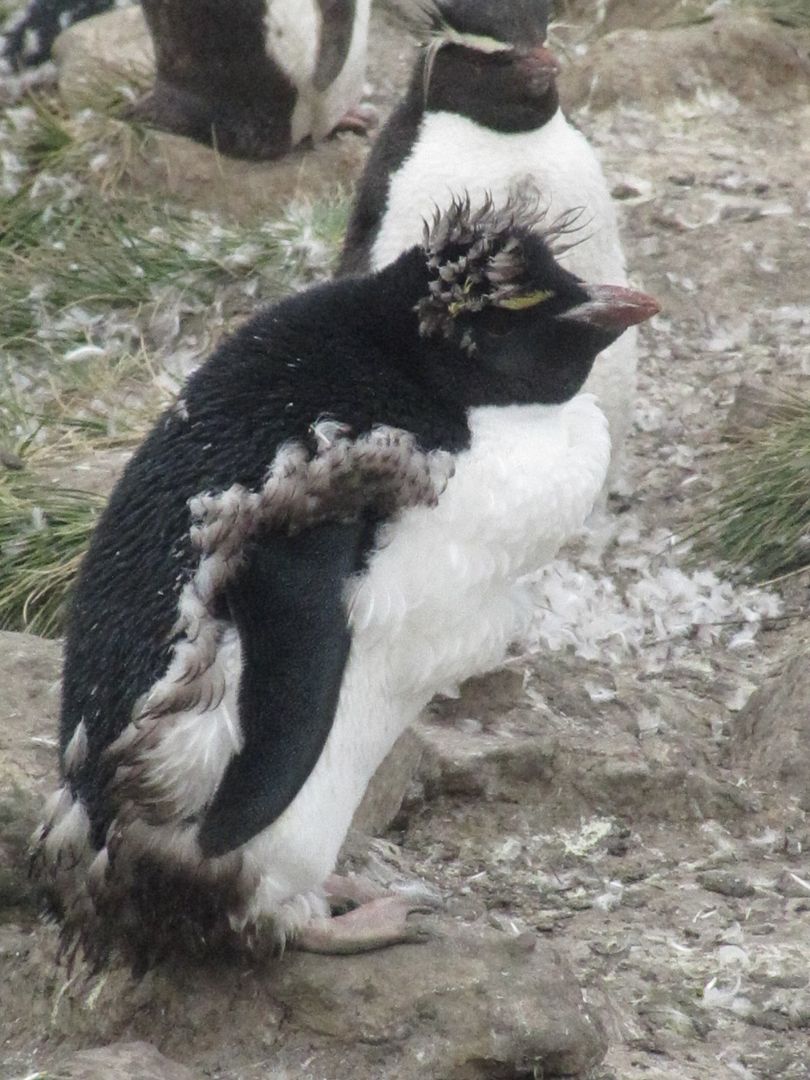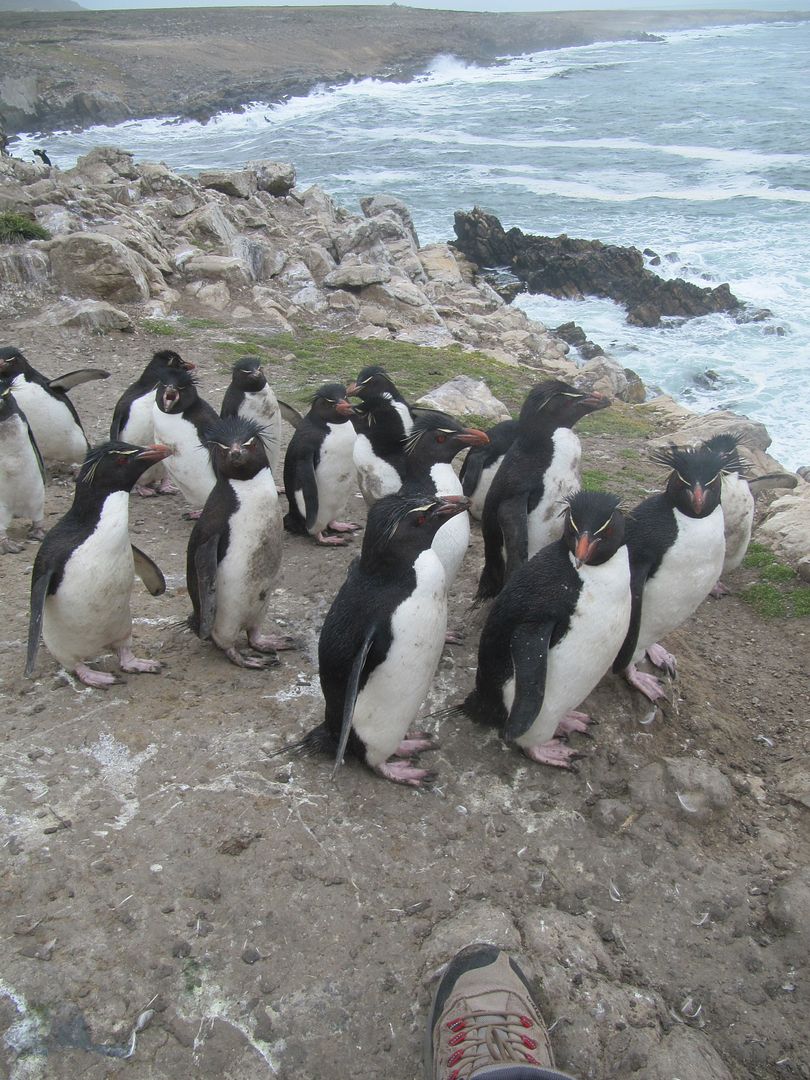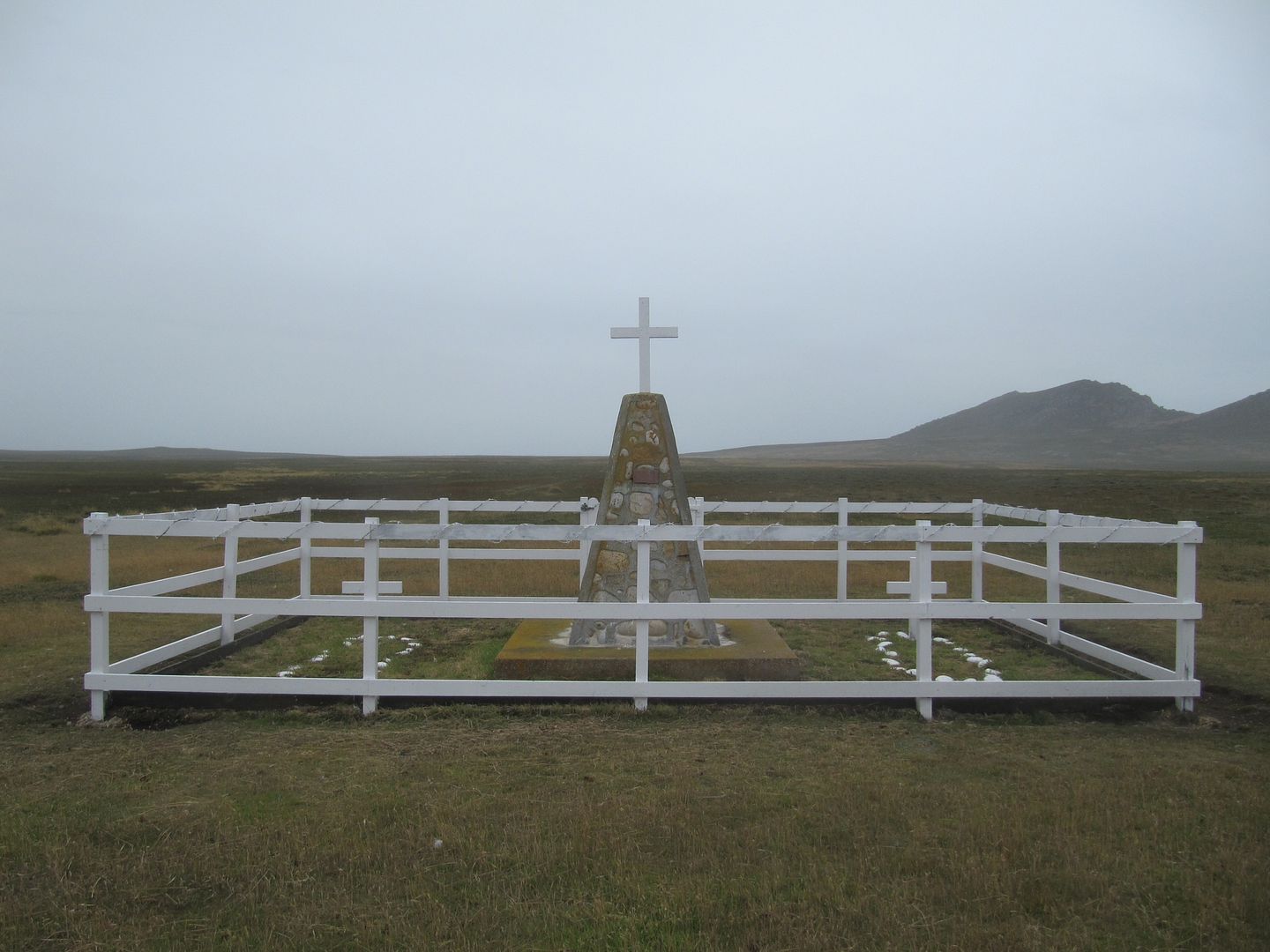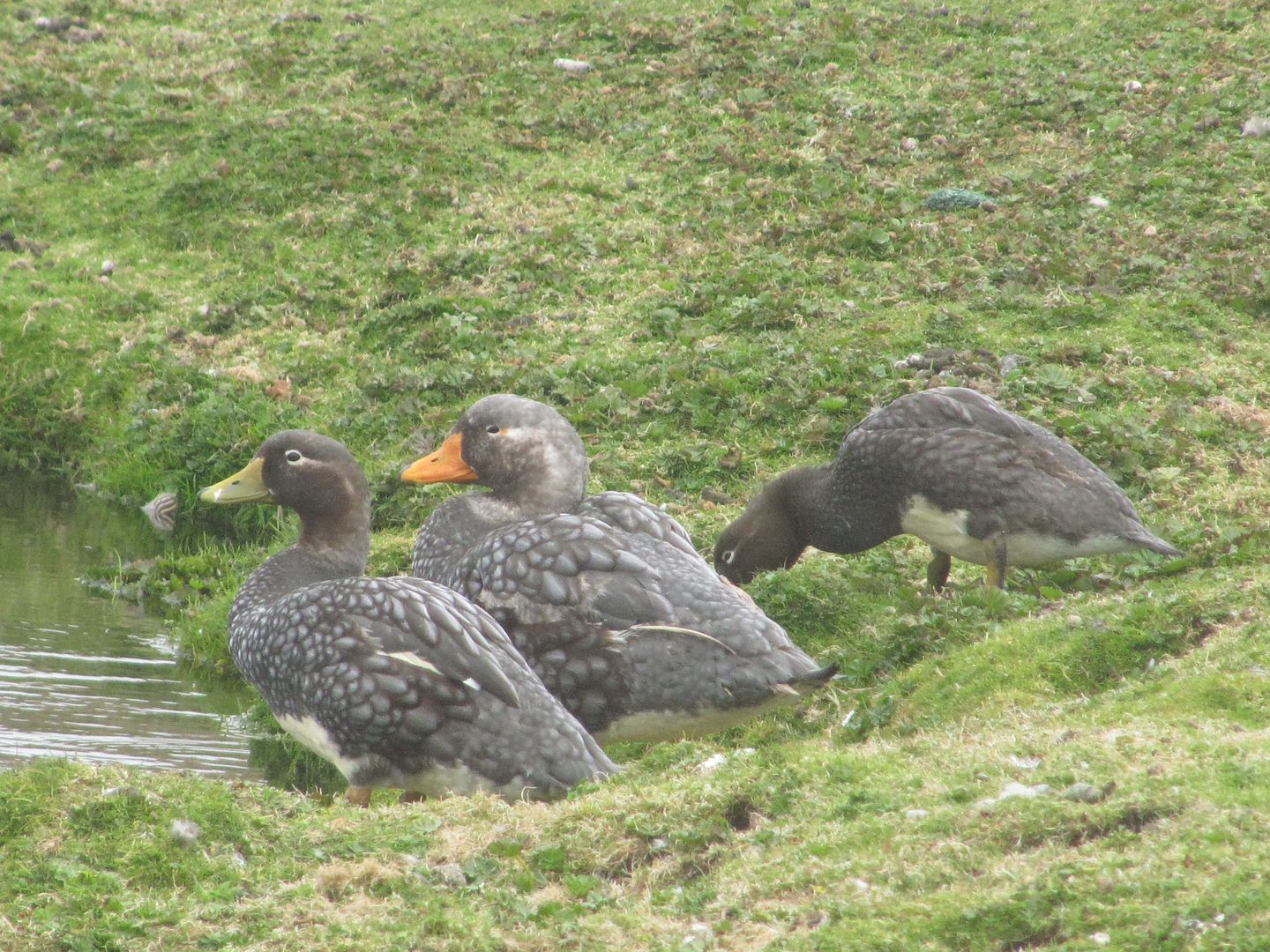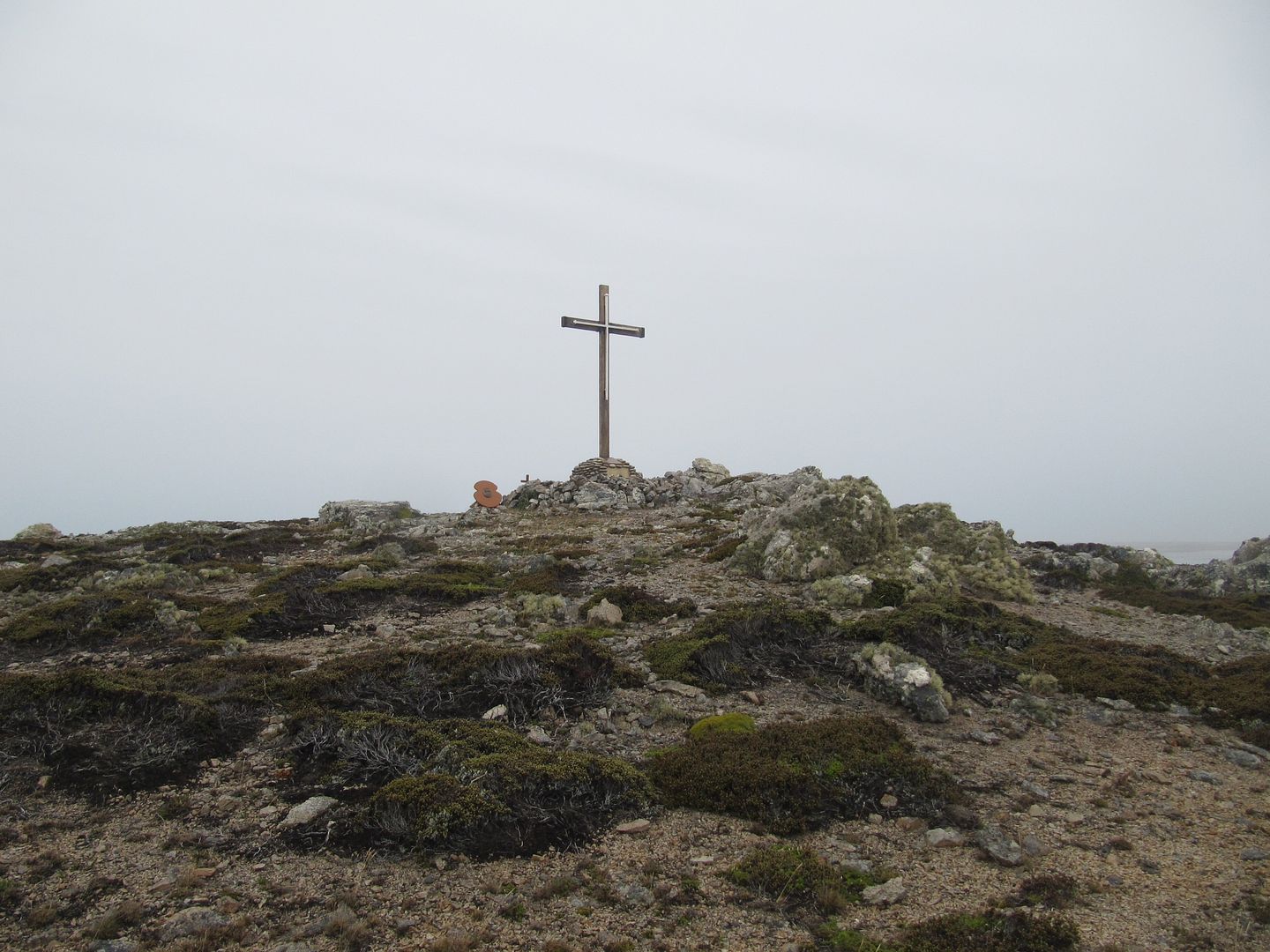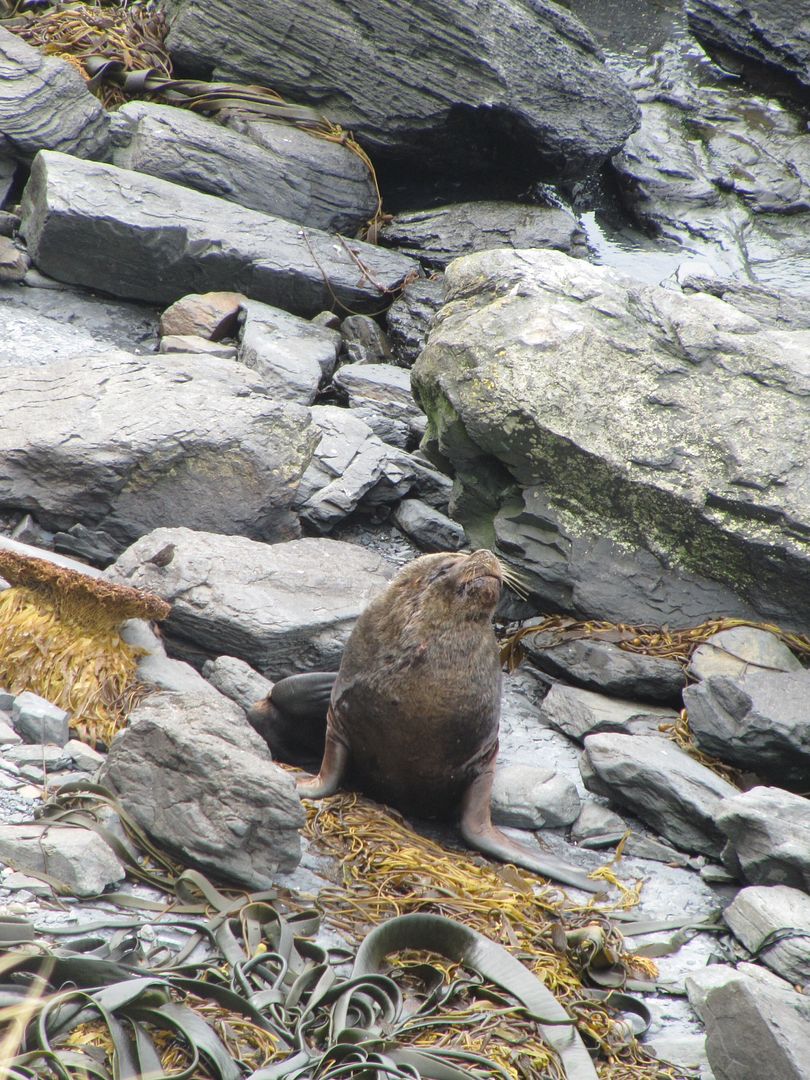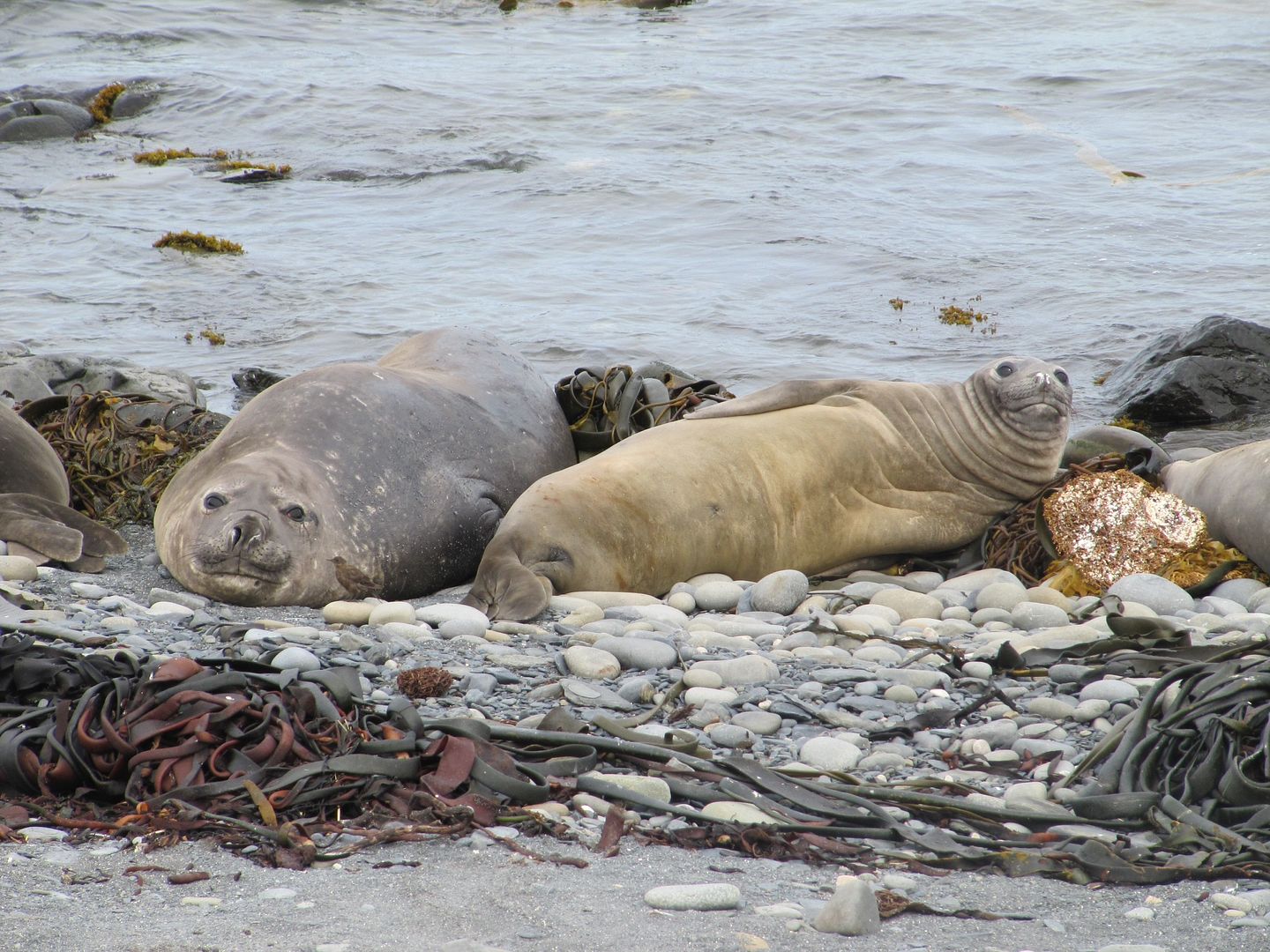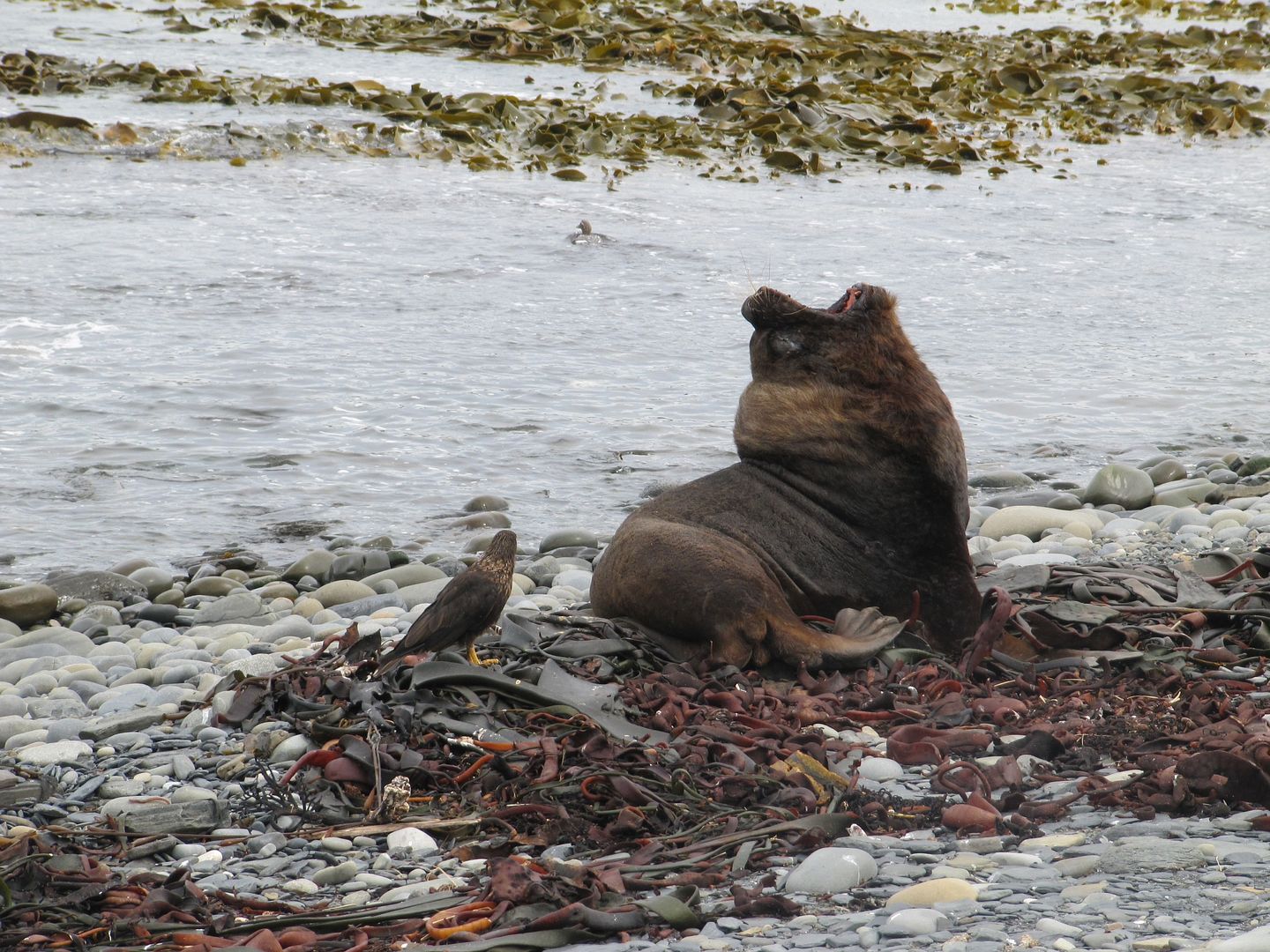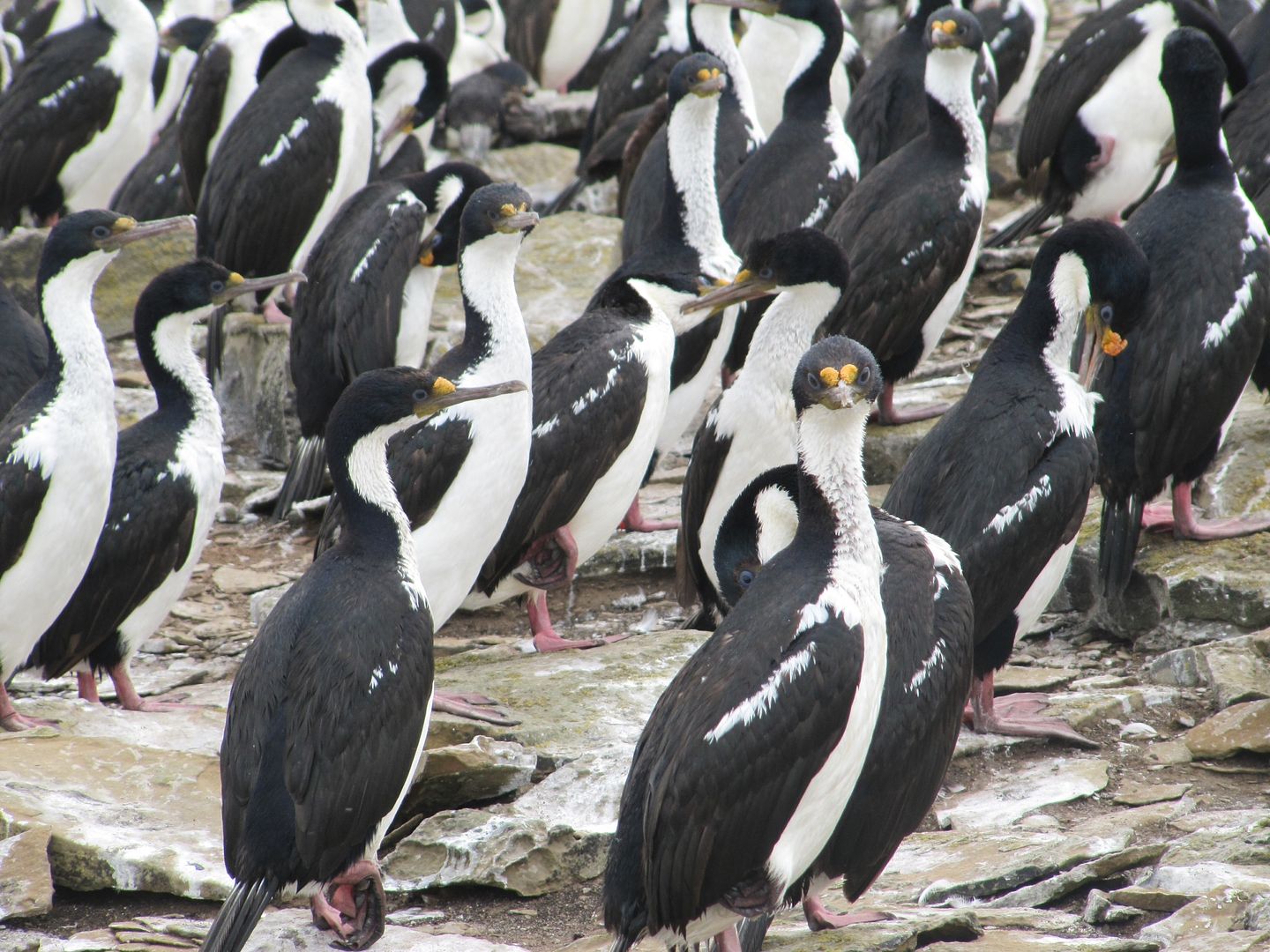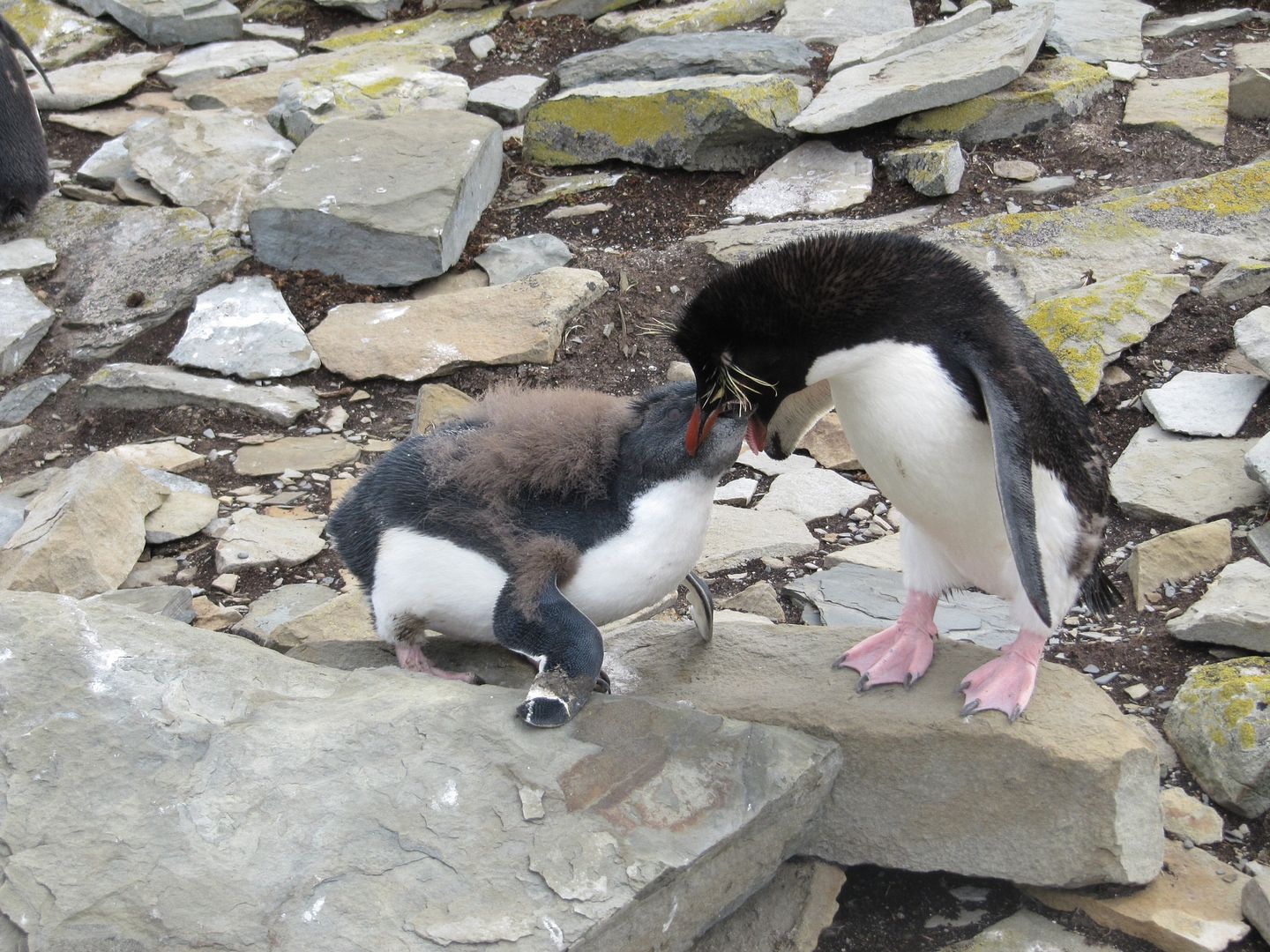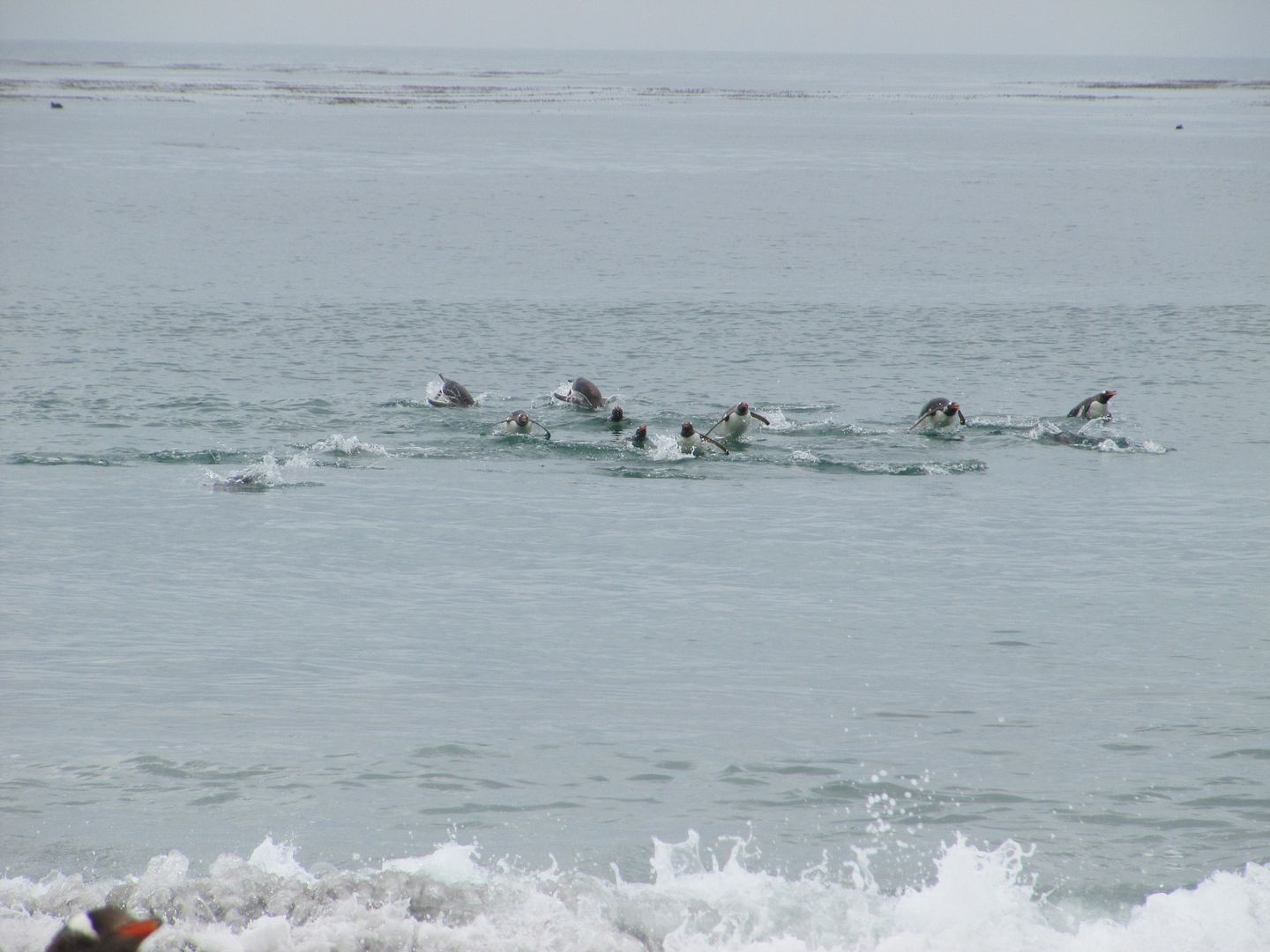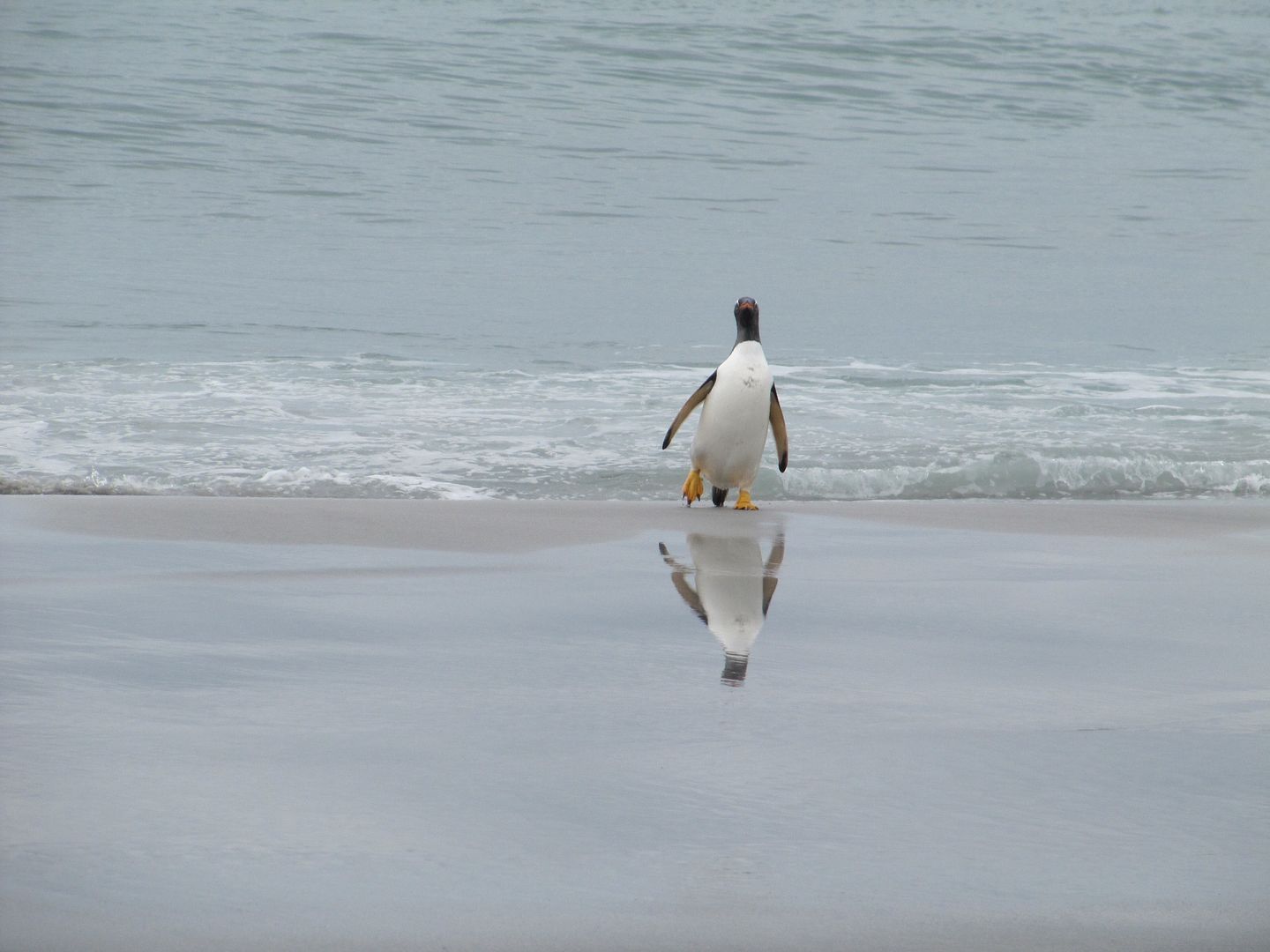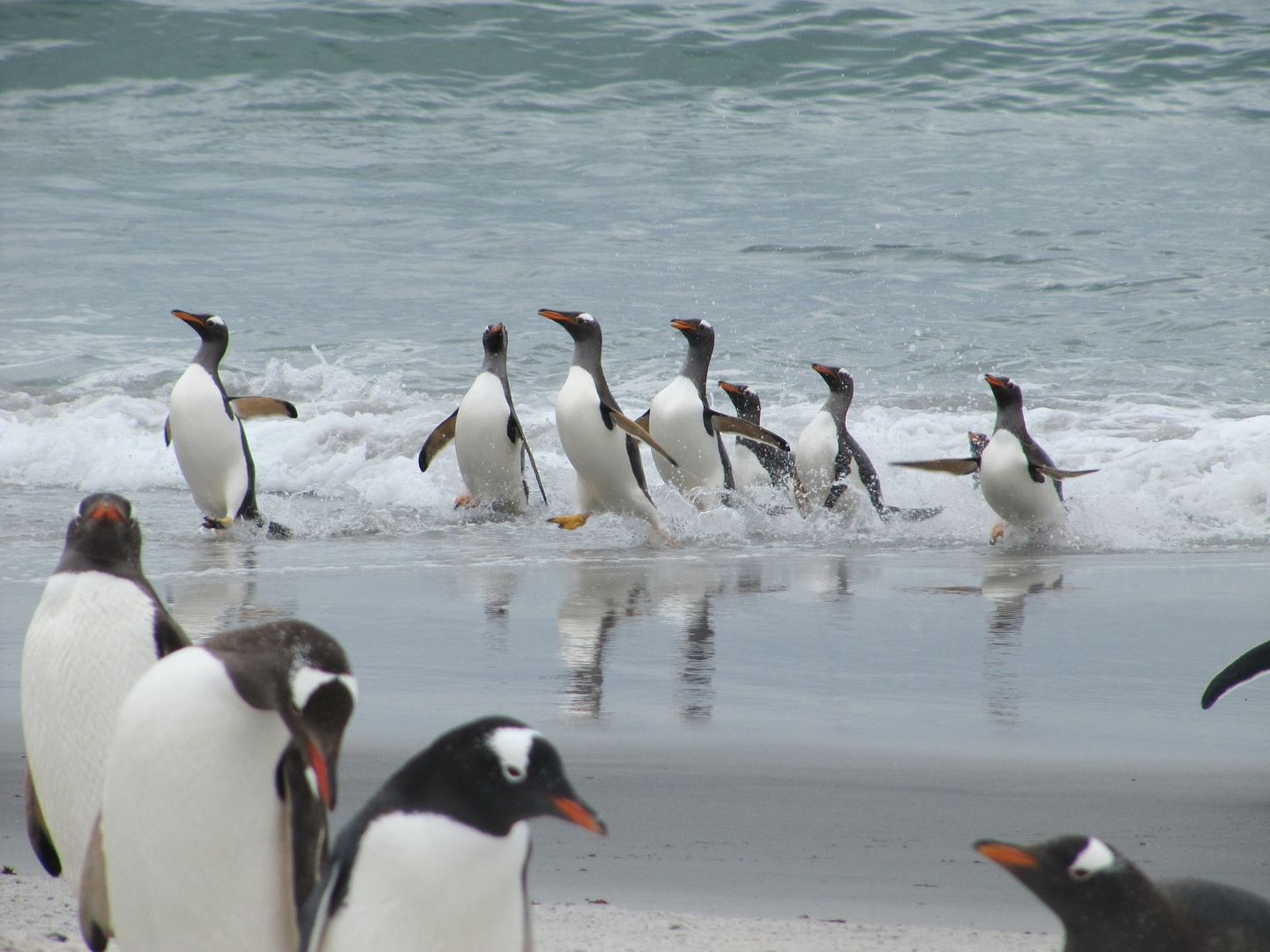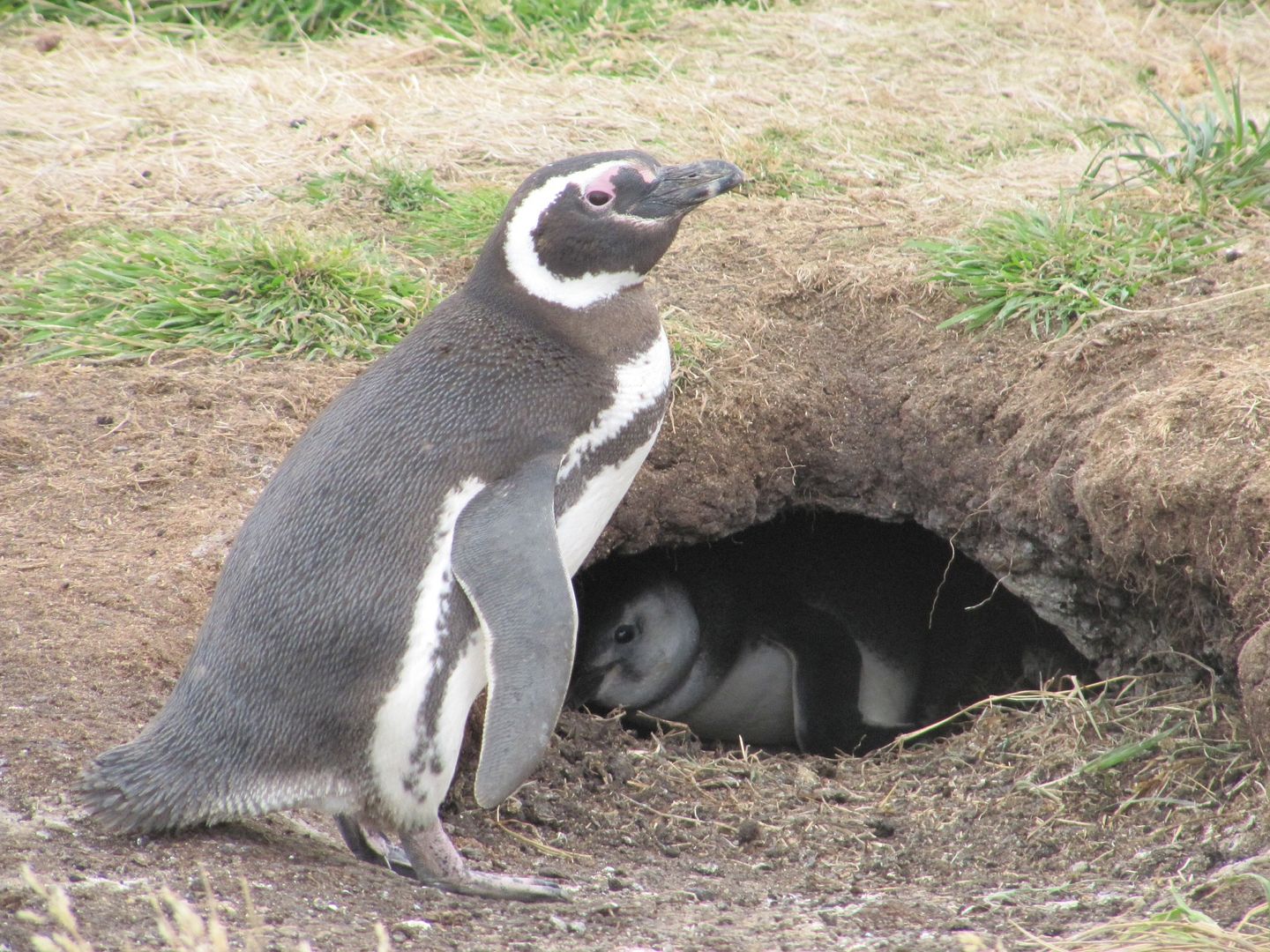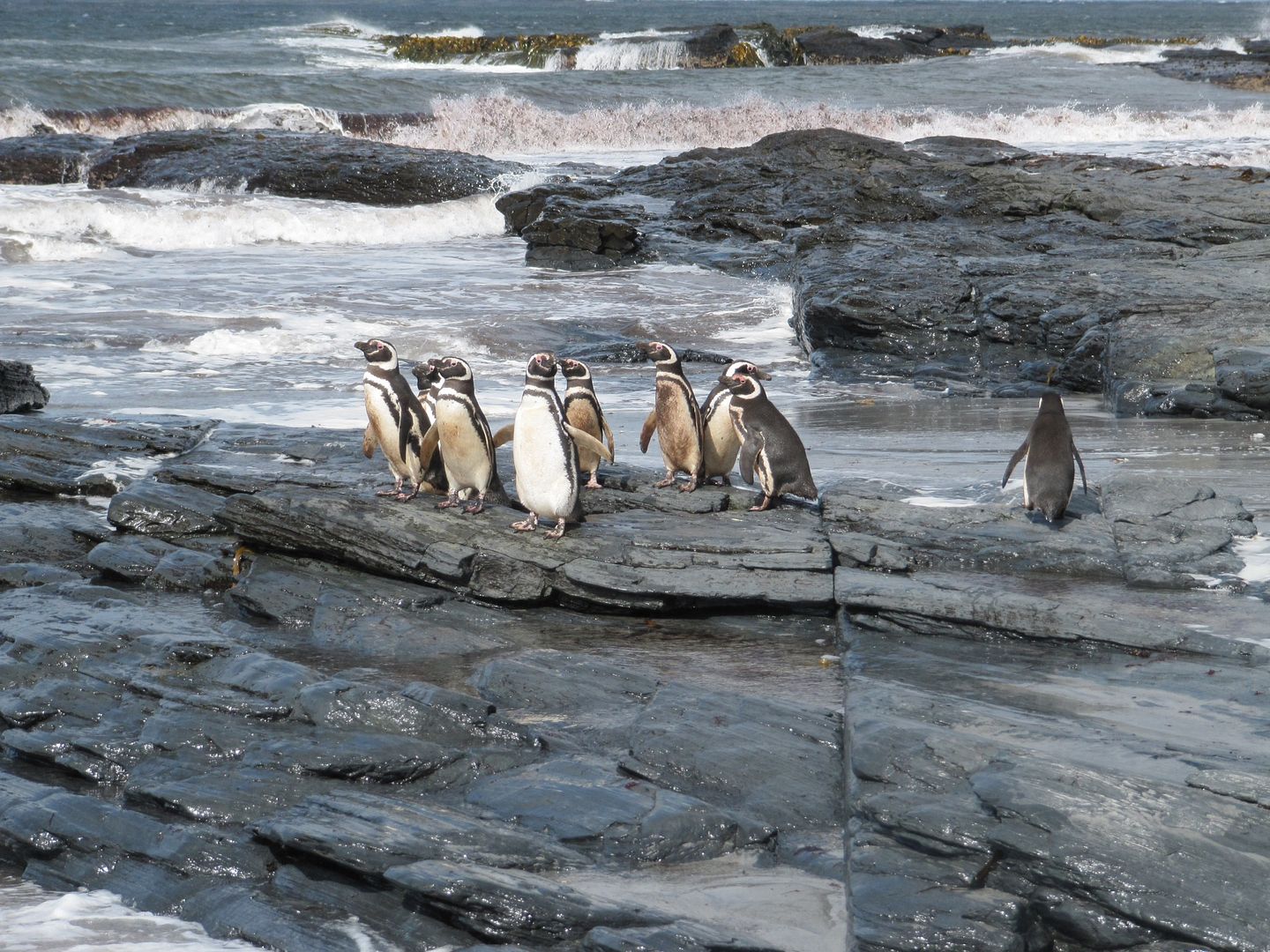 |
| Magellanic penguins |
After the tour around the island the first day, our plan was to walk around it the second day, and spend a bit longer with the penguins. We set off after breakfast with our packed lunches,and plenty of layers to fight off the rather cold wind that always seems to be blowing through the islands.
We walked over to the beach where the elephant seals and magellanic penguins would be, and where you can sometimes see orcas out looking for a meal. There were no orcas out today though.
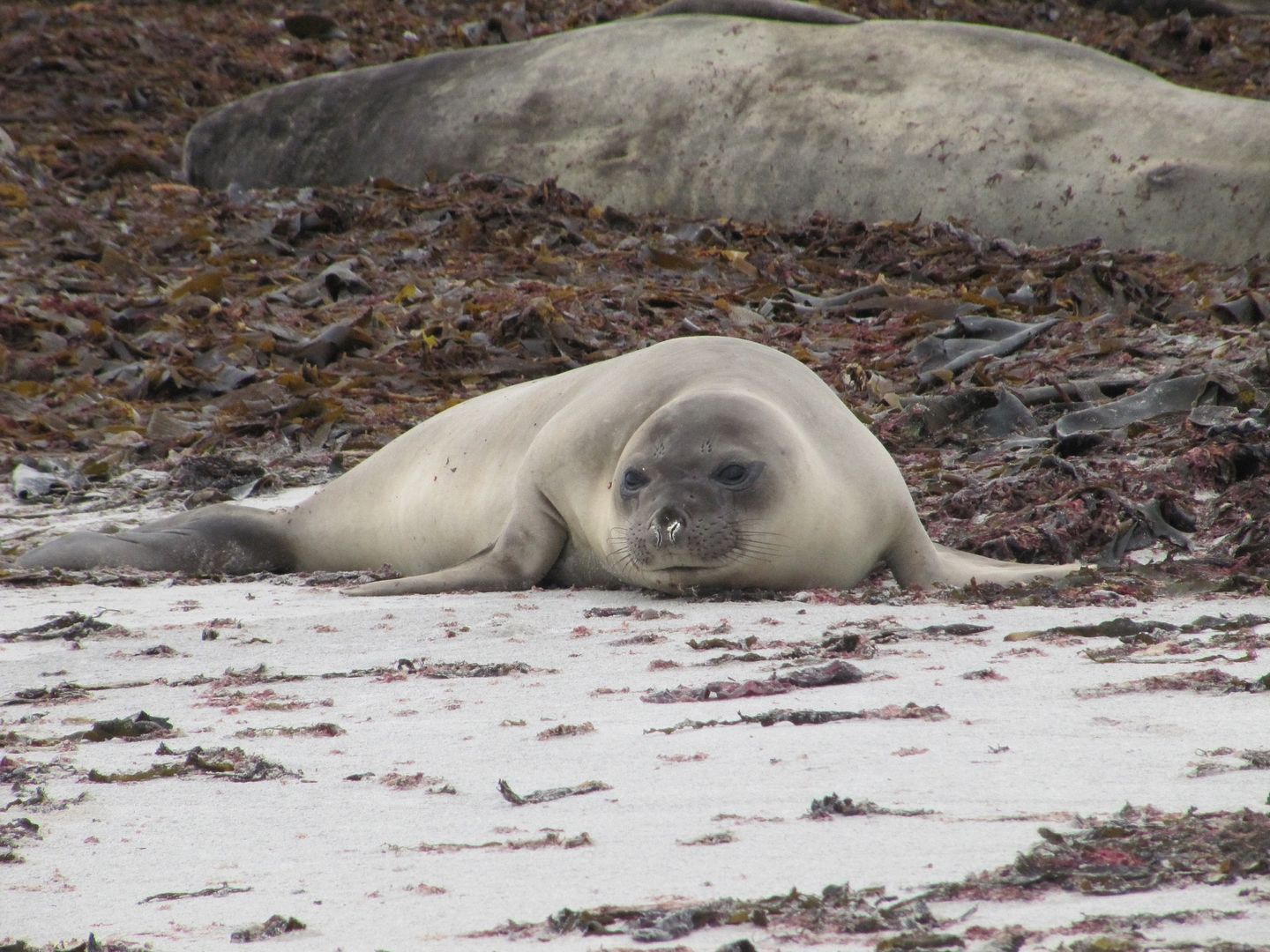 |
| Elephant seal |
The magellanics kept their distance - they do seem to be the most timid and least friendly of the penguins we've encountered so far - but it was still good to watch them hovering around the water's edge, apparently not being entirely sure whether or not they wanted to take the plunge into the cold sea.
There were a lot of elephant seals out on the beach, some of them huge ones. You have to be careful as you approach them because if you don't look carefully you can mistake them for a rock and end up getting too close for comfort.
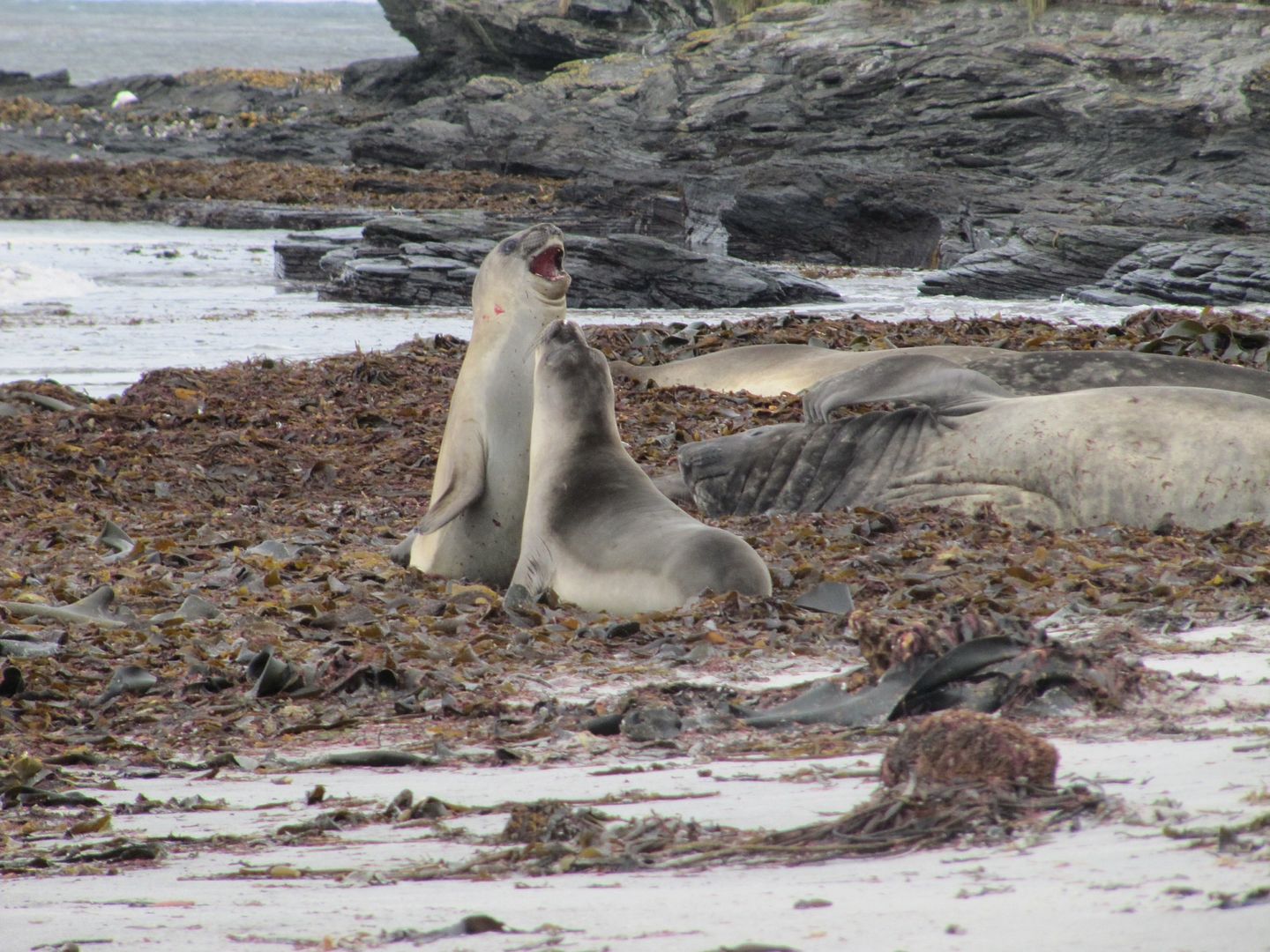 |
| Elephant seals squaring up |
We watched a couple of seals get into a bit of a tiff and start growling and barking (or whatever seals do) at each other. They don't seem like they would be able to do a great deal of damage in a fight, as they just face up to each other and bite, but in fact they are quite powerful and even though this seemed more like a spat than an all out fight, they drew blood. They settled down after a while though, presumably having established an appropriate pecking order.
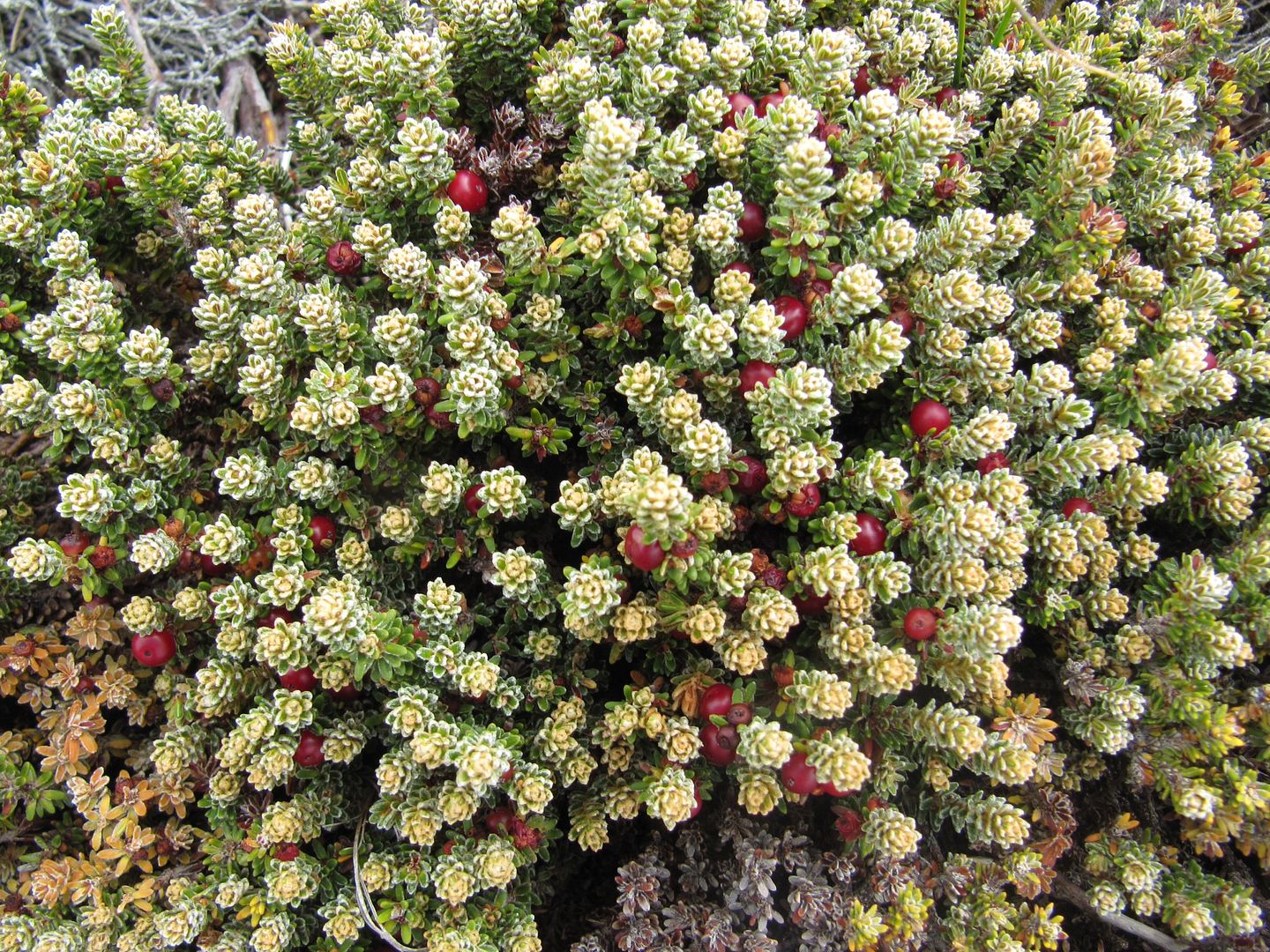 |
| Diddle dee |
We were just going back up the beach with the intention of walking over to the other side of the island to the rockhoppers, when it started to rain. It rained hard and at some point at least it hailed. Now I had my waterproof trousers on, but Nic had decided not to bother, and he in particular was getting really quite wet. So we decided that as the lodge wasn't far away, we would retreat to give the rain a chance to pass over, and for Nic to dry out.
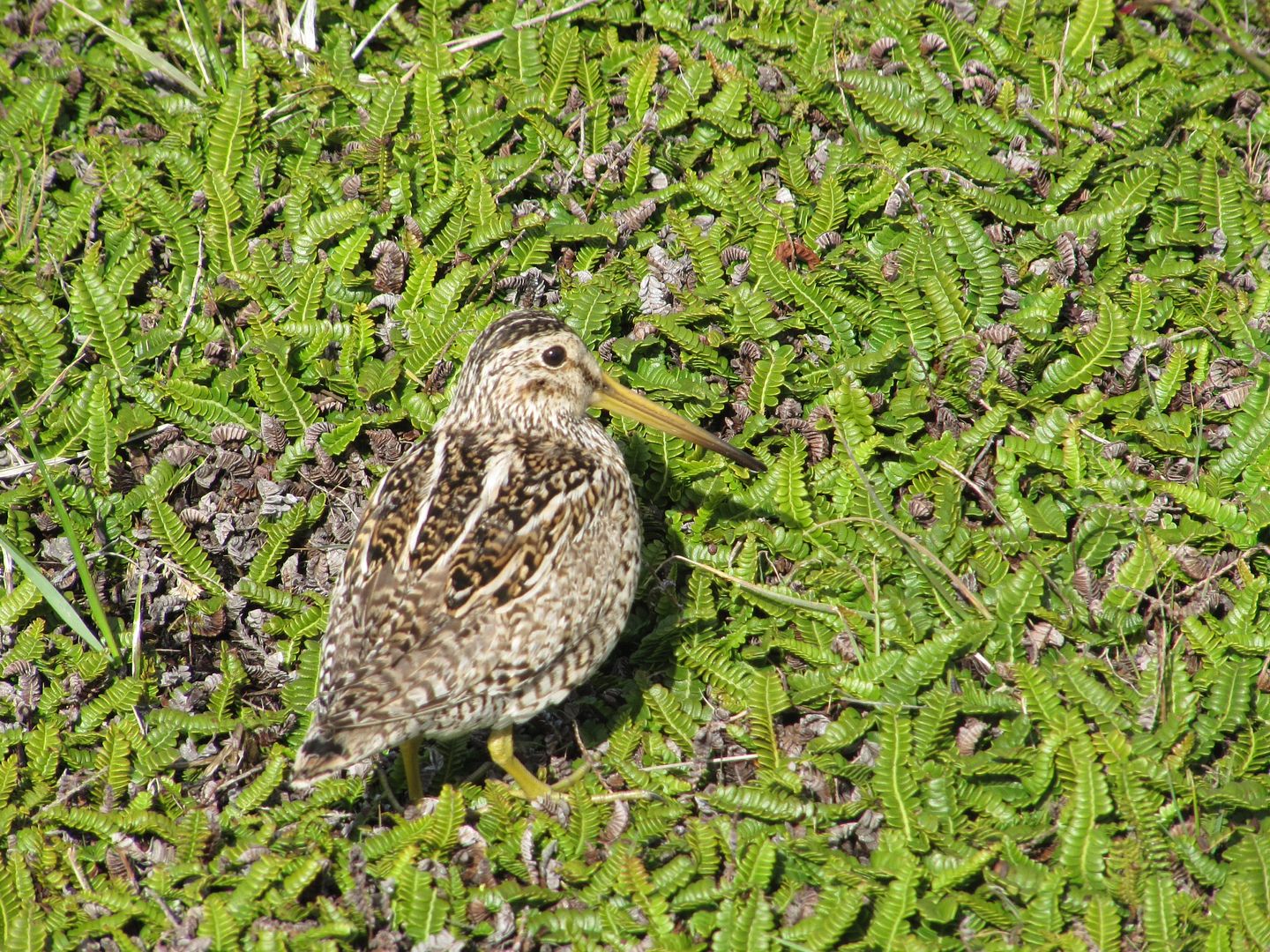 |
| Snipe |
We stayed at the lodge for lunch and set out again in the afternoon.
Although the other birds along the way weren't our main interest, we were at least able to recognise a few of the main types found here. There are the little snipes that run around in amongst the grasses and the diddle dee, the bigger striated and crested caracaras, and the even bigger turkey vultures. We had no idea what most of the others were, but never mind.
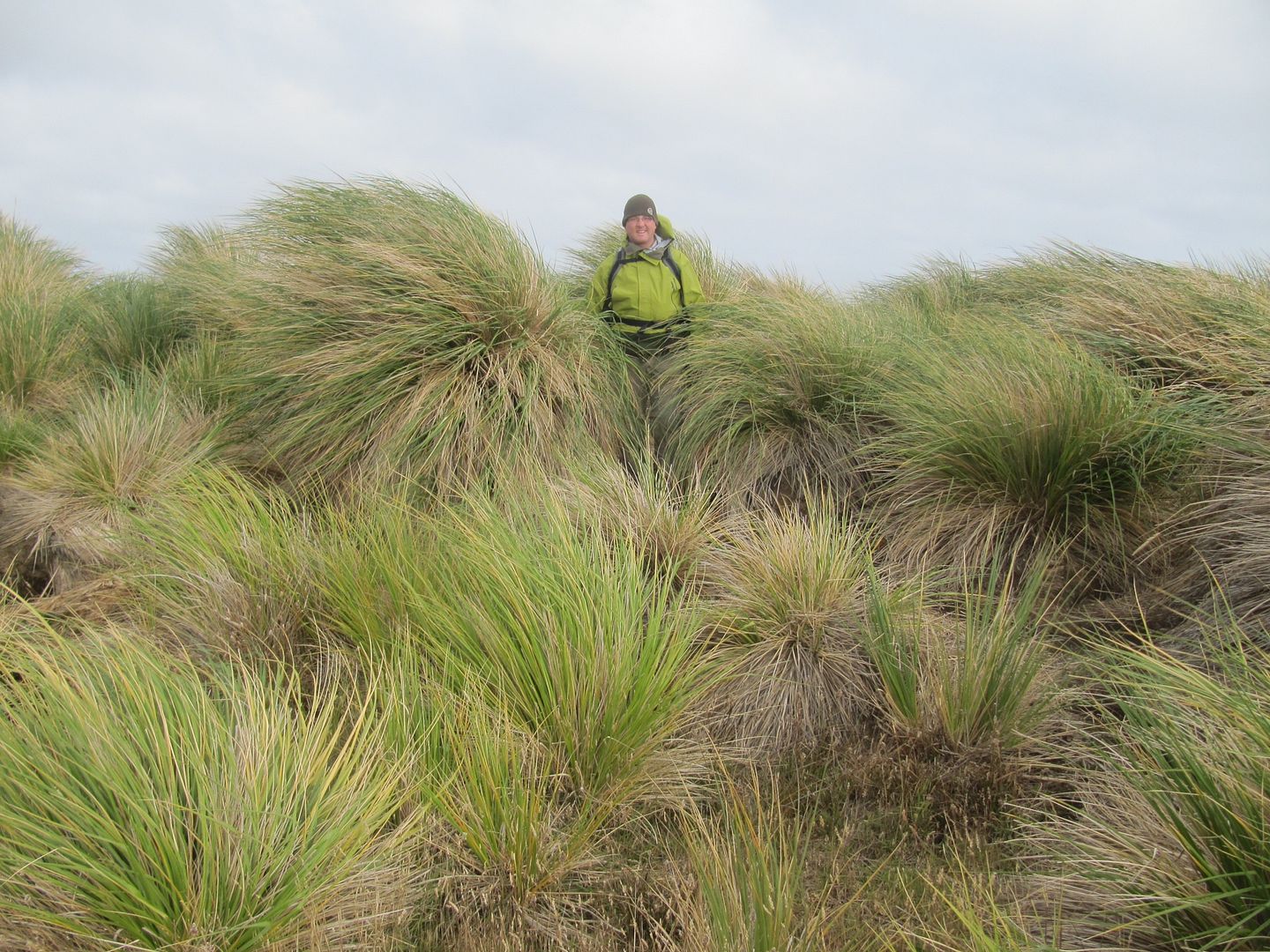 |
| Nic in the tussac grass |
This time we did make it the two and a half miles to the rockhoppers. We took the longer route around as we had been warned that it is possible to get horribly lost in the huge tussac grass. Seeing the size and expensive of it for ourselves, we could see the potential for trouble so kept well away.
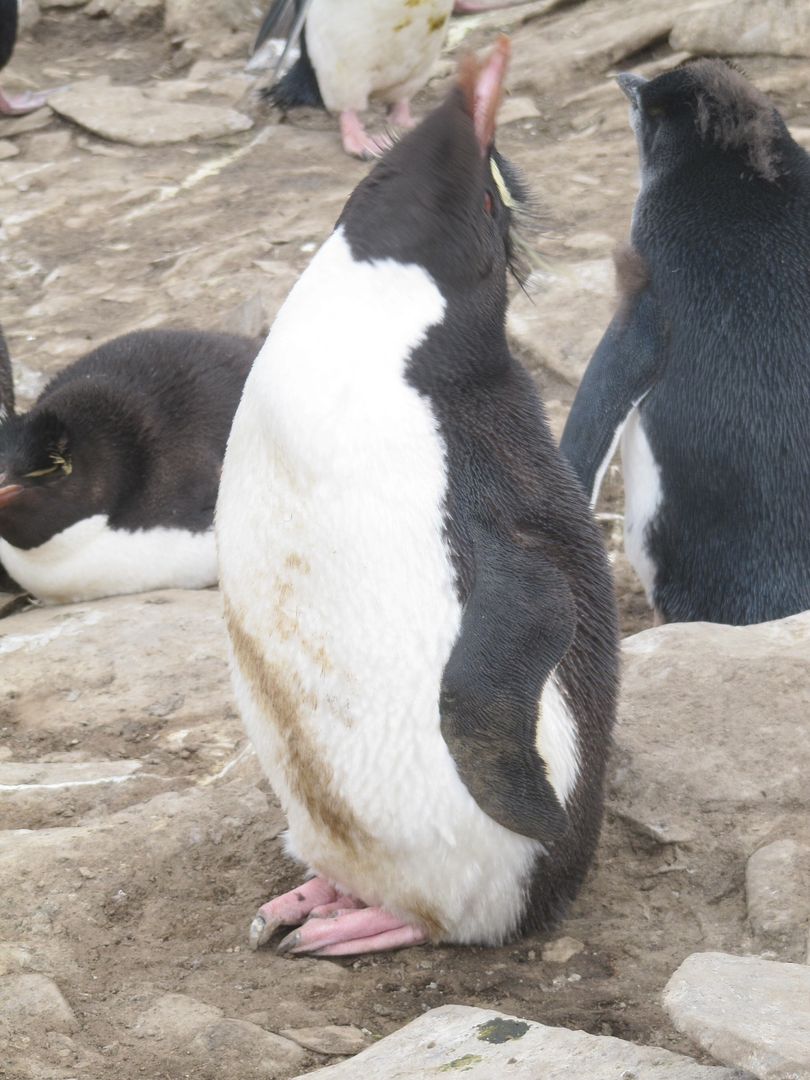 |
| Rockhopper calling |
The rockhoppers are probably the cutest looking of the penguins here and it is fascinating the way they hop along and over the rocky area they choose to make their home on. Most of the ones here are the chicks, not yet ready to go out to sea themselves. There are some adults standing guard, but most are out getting dinner for the little ones.
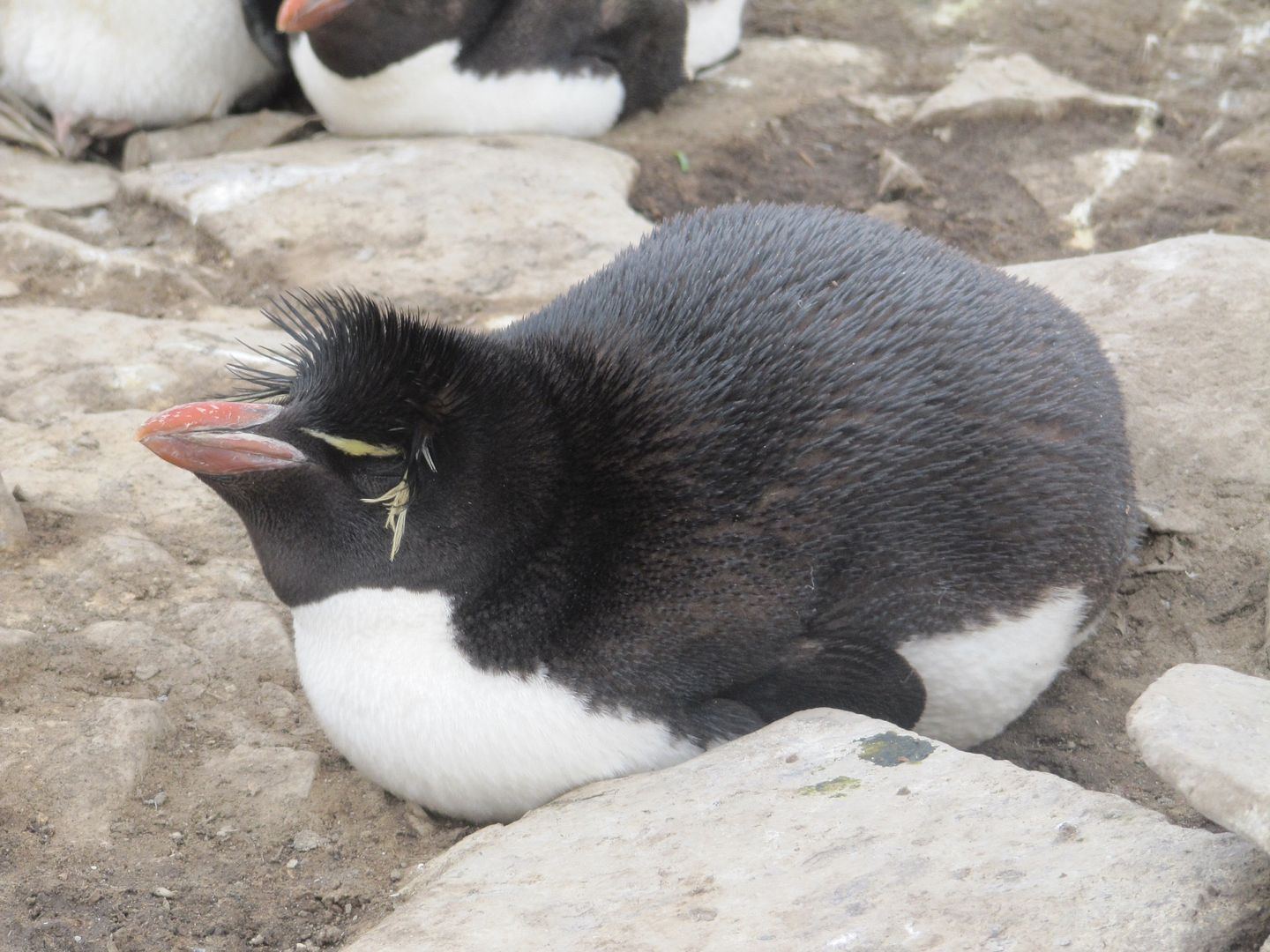 |
| Rockhopper penguin |
At this time of year, the young ones are grown to full size and are in various stages of shedding their downy feathers and growing their distinctive yellow tufts. A few are at the unfortunate point where they have lost all the fluffy feathers from their head and neck, but none from the rest of their body, which gives them that baldy look like turkeys or vultures.
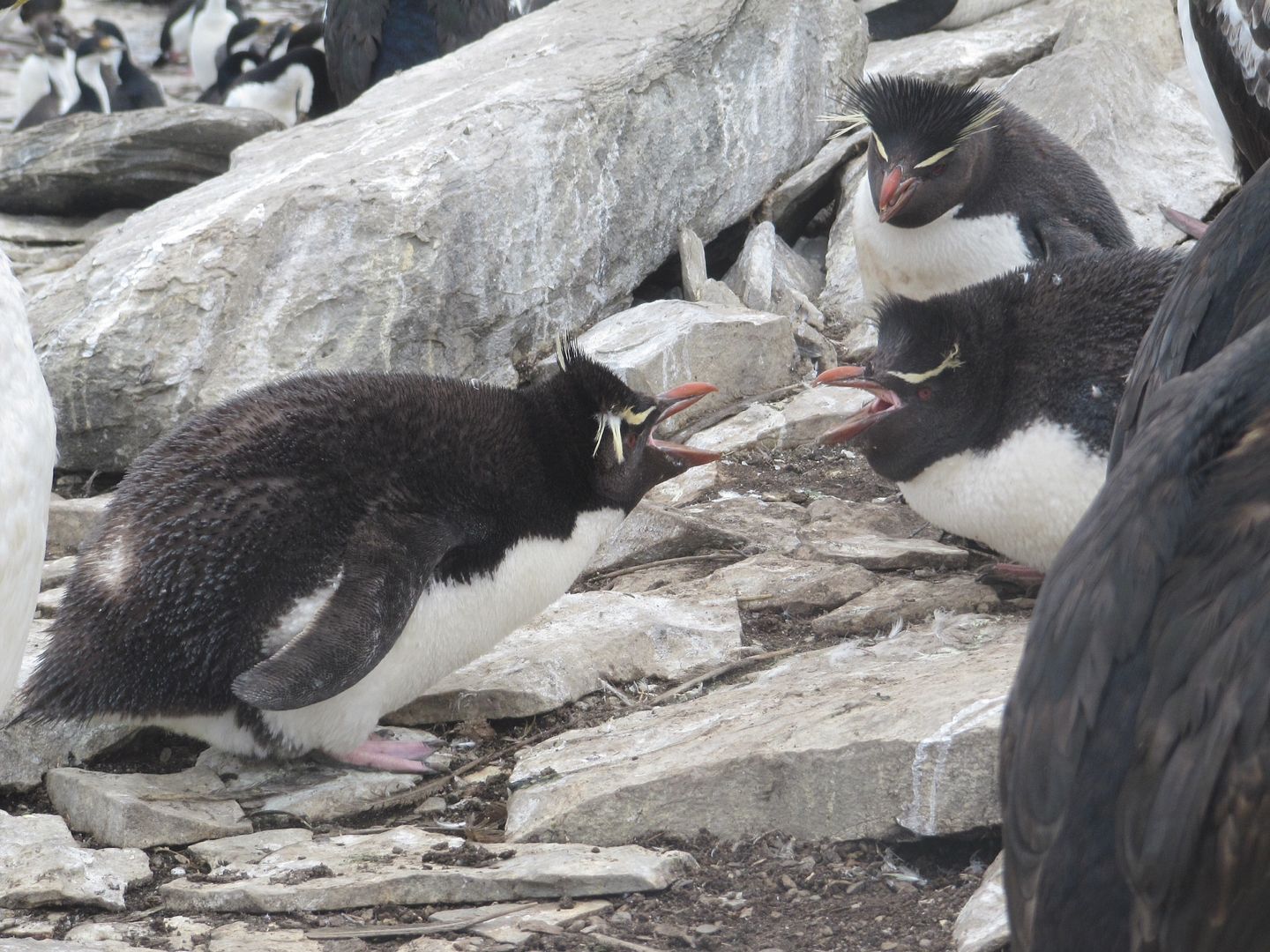 |
| Rockhopper penguin spat |
The rockhoppers generally appeared to be quite placid creatures. Every so often there will be a territorial spat or some other disagreement, but mostly they stayed huddled on their own space, puffing themselves up a little to keep out the wind, and just quietly looked around to see what was going on.
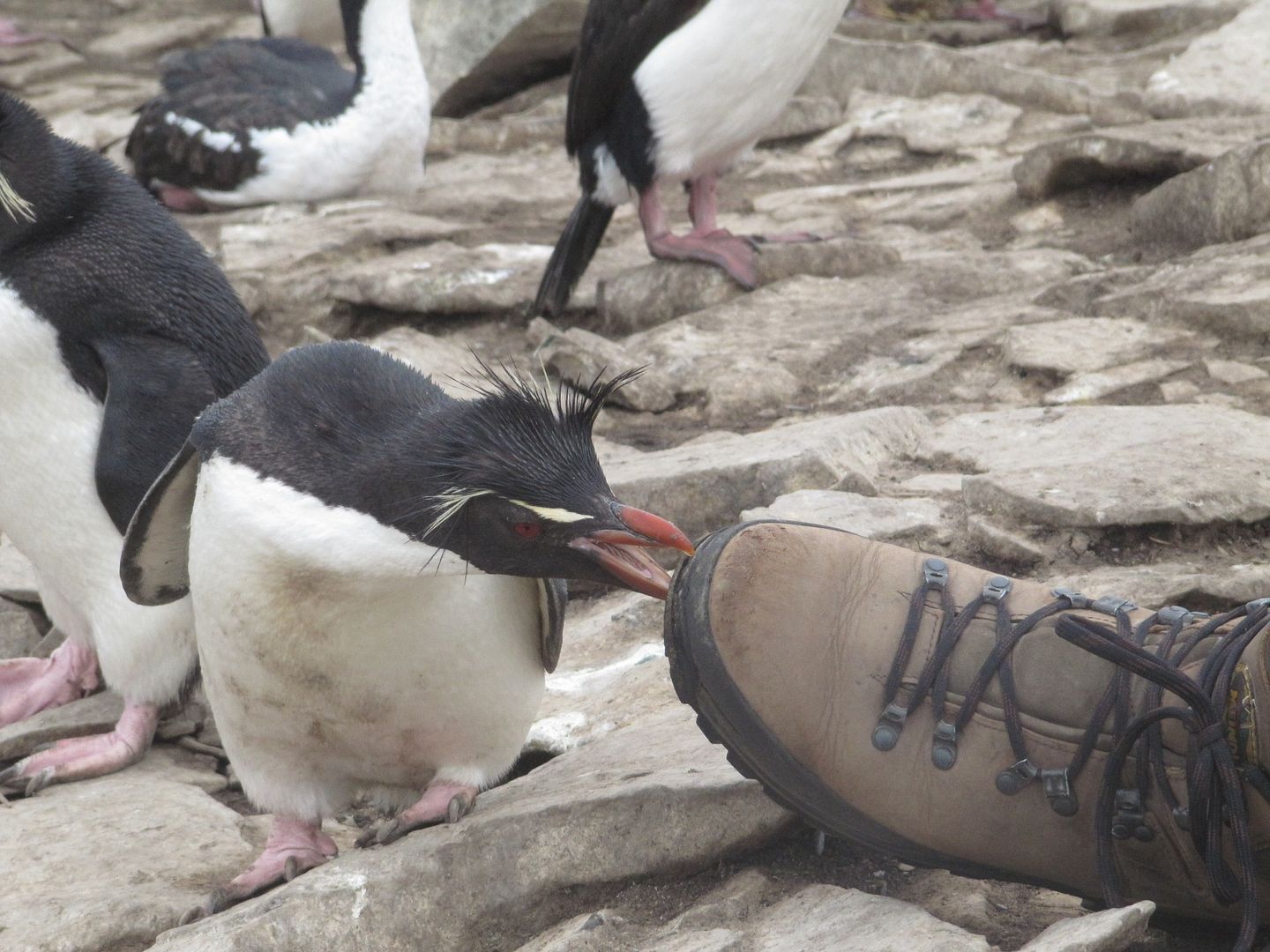 |
| Rockhopper pecks Nic's boot |
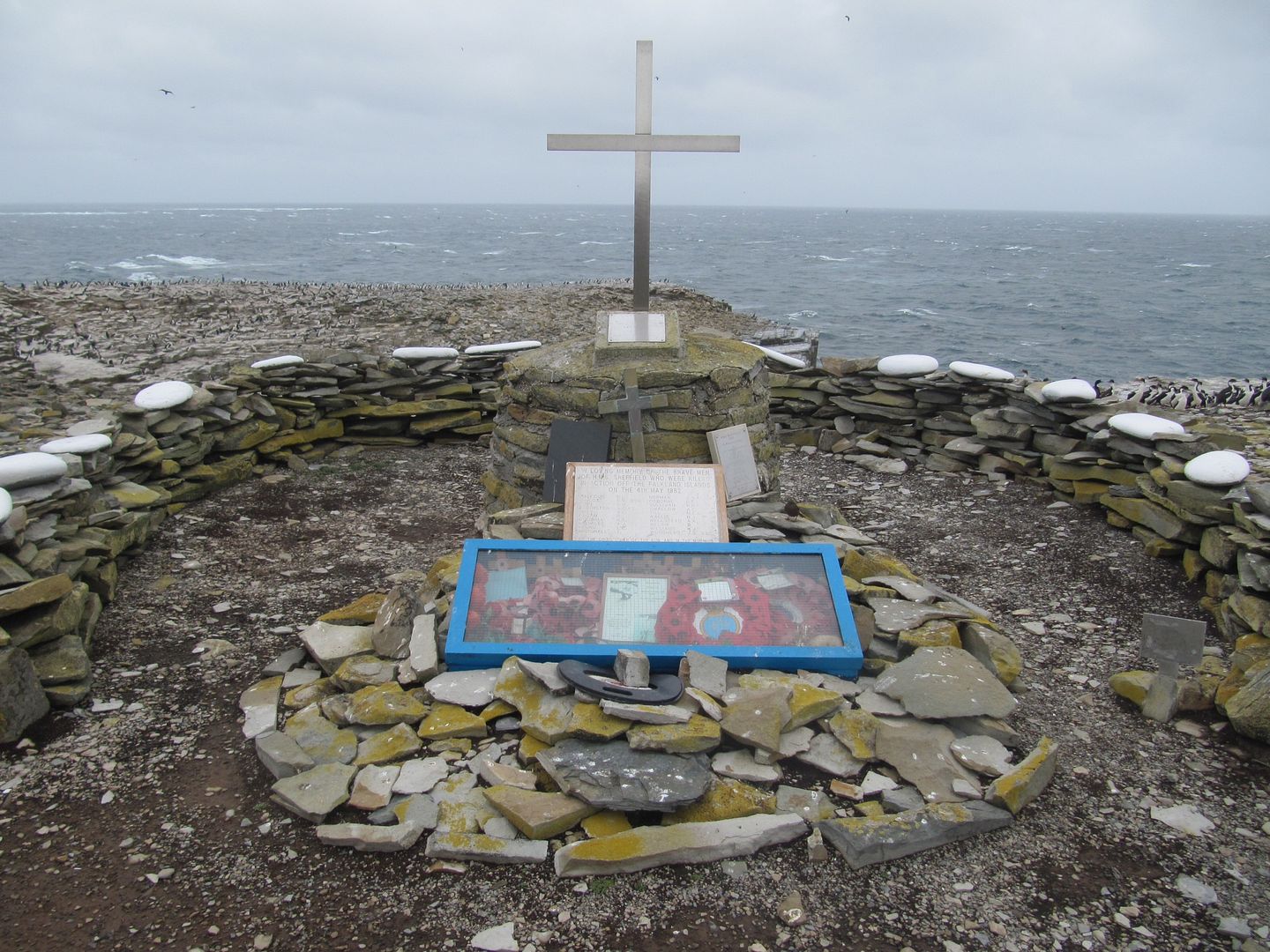 |
| HMS Sheffield Memorial |
A few were more inquisitive and came a bit closer to us to check us out. Nic was sat on the rocks and one of the braver ones gradually approached him and had a quite peck at his boot, but soon hopped back off again. I am pleased to say that neither penguin nor boot was traumatised by the experience.
We stayed watching them for about an hour or so before heading back to the lodge to warm up and have dinner.
First though, we took a look at the nearby memorial to HMS Sheffield and those who died on it in 1982. The islanders are grateful to those who freed them and, along with those who visit to pay their respects, they take good care of the various memorials on the islands.
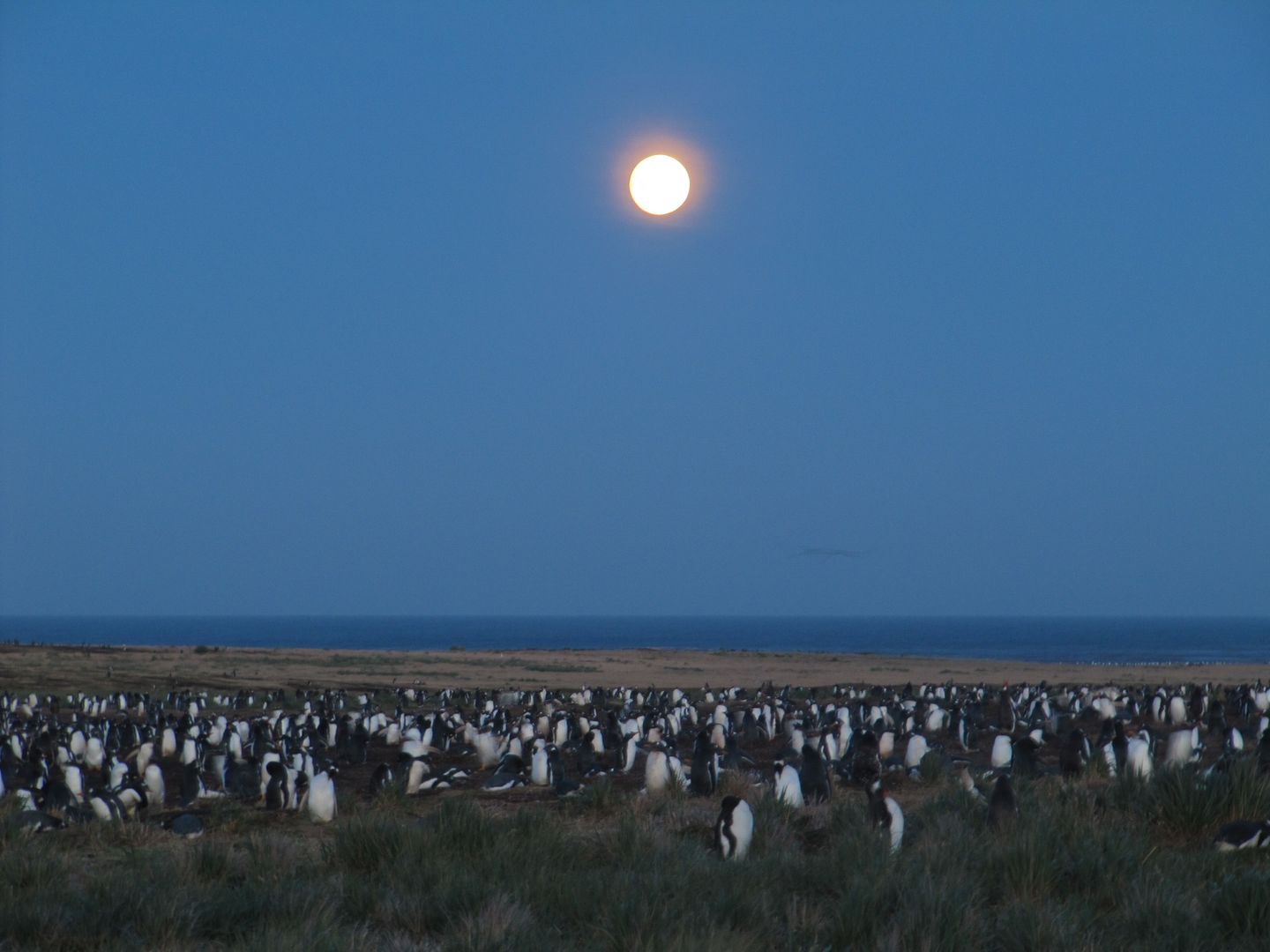 |
| Gentoos in the moonlight |
In the evening there was a fabulous moon above the Gentoos, which looked really amazing. Again sadly my pictures don't do it justice.

